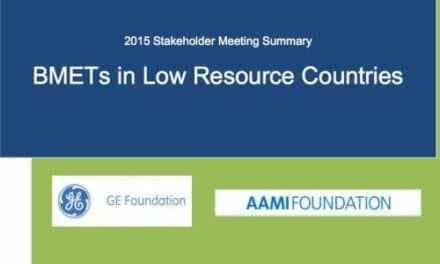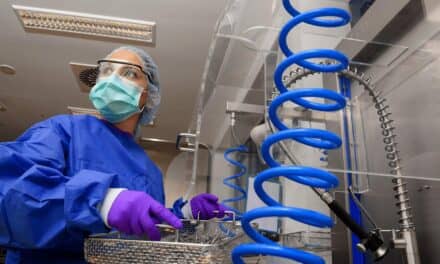An overhauled technical information report (TIR) from the Association for the Advancement of Medical Instrumentation (AAMI) may change how device designers and industry consider risks associated with intravascular medical devices.
The extensive 2021 update to TIR42, Evaluation of particulate associated with vascular medical devices, comes more than 10 years after the previous version debuted. According to project lead Eleni Whatley, biomedical engineer at the U.S. FDA’s Center for Devices and Radiological Health (CDRH), the AAMI document has kept its primary purpose of providing recommendations for determining the source of harmful particulates, establishing particulate limits, and defining appropriate test methods to achieve these goals. However, the new version also thoroughly explores clinical risk assessment.
“By providing much more specific details and in-depth discussion points about the benefit-risk analysis, the TIR is enabling individual manufacturers to take their specific device and their specific treatment scenario and consider strategies to lower risks related to particulate introduction into the vascular system,” Whatley says.
AAMI TIR42:2021 focuses on intravascular medical devices—those that are used within a blood vessel—as opposed to long-term implants such as pacemakers. This latter group of complex implantable devices have their own standards, but the acute tools and devices that facilitate the surgeries to implant permanent devices also come with their own risks that should be accounted for. If an intravascular medical device sheds particulates into the bloodstream, it can be a serious and unforeseen threat to a patient.
The AAMI working group that developed the updated TIR was co-chaired by Dinesh Patwardhan, material scientist at CDRH, as well as Terry Irwin, a distinguished quality engineer with 25 years of industry experience.
“Over the last ten years, there was a significant advance in these kinds of technologies. The benefits versus risks for each have to be thoroughly evaluated by the industry and by reviewers,” says Patwardhan. “Because these technologies are changing, it becomes important to figure out where to draw the boundary. A ‘catch all’ standard may have limited utility for stakeholders, so this TIR includes very specific criteria for what this document and these methods apply to.”
For example, the document touches on specific benefit-risk analysis scenarios for particles from intravascular catheters or guidewires but will not account for the risks posed by particles from the operating room, such as lint from a gown or gauze. And while the document could not outline specific particulate limits due to the vast number of different devices, diseases, and vascular territories, it does include a comprehensive discussion for how individual manufacturers can go about developing these specifications.
According to Cliff Bernier, director of standards at AAMI, it is thanks to the contributions of a diverse cast of professionals—including physicians, researchers, industry, and regulatory representatives—that the updated document can build upon existing knowledge while also providing a new level of clarity. “If somebody who is not 100% familiar with particulate assessment takes a look at this technical information report, it is written in a way that they can still follow,” Bernier says.
The goal is that readers will be able to better grasp regulatory expectations, what kind of testing should be done, and what you should do with the resulting data. As for what comes next, this AAMI working group is monitoring other AAMI standardization groups to keep tabs on changes in the intravenous space.
“We’re in touch with the clinicians, pathologists, and industry reps who have interest in continuing to explore knowledge gaps in this area so that AAMI can continue to develop standards that make medical products safer,” Whatley says.





